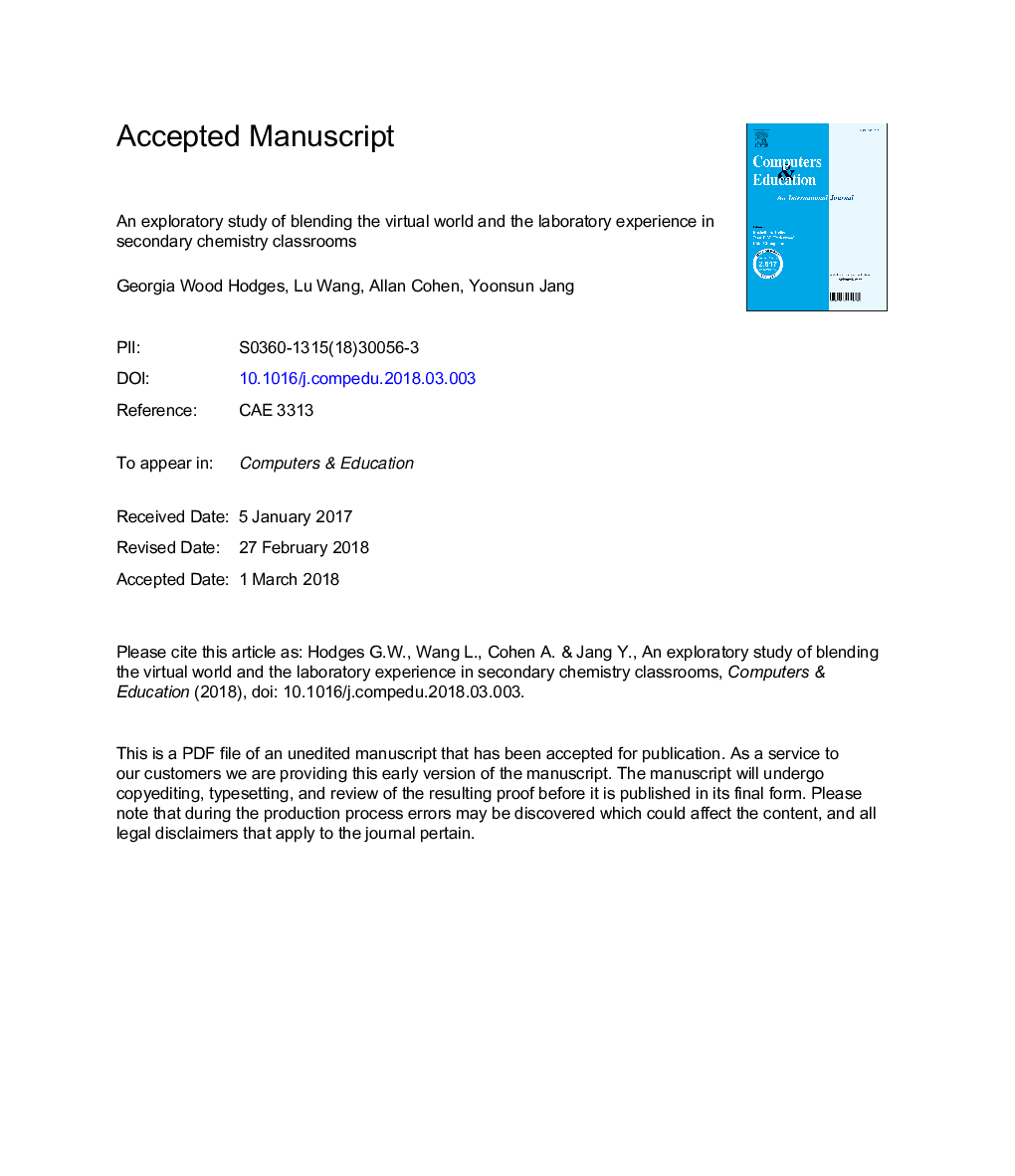| Article ID | Journal | Published Year | Pages | File Type |
|---|---|---|---|---|
| 6834708 | Computers & Education | 2018 | 32 Pages |
Abstract
Research suggests that serious educational games may support learning of microscopic phenomena by making the invisible visible. The current study presents a novel instructional approach that blends a traditional lab experience with a serious educational game (SEG) to engage students with the hands-on laboratory experience while examining the molecular level mechanisms that cause the phenomena. We conducted a mixed methods study to examine teacher use of the blended reality environment (BRE) that utilizes a real-time data capture system and the learning gains associated with use of the BRE with chemistry students (nâ¯=â¯578) in a public high school in the southeast. The results demonstrate that students who experienced the blended reality environment (a) experienced significantly higher learning gains than students who experienced the business as usual (BAU) condition and (b) improved on specific scientific practices outlined in the Next Generation Science Standards (NGSS) by practicing science skills in an authentic environment as scientists do. Analysis also reveals the explanatory power of examining student interaction within the BRE. Thematic analysis of teacher interviews identified three strengths of the BRE environment: (a) a coherent explanation of scientific phenomena, (2) an authentic science inquiry, and (3) a connection between the student and teacher within the learning environment.
Related Topics
Social Sciences and Humanities
Social Sciences
Education
Authors
Georgia Wood Hodges, Lu Wang, Juyeon Lee, Allan Cohen, Yoonsun Jang,
